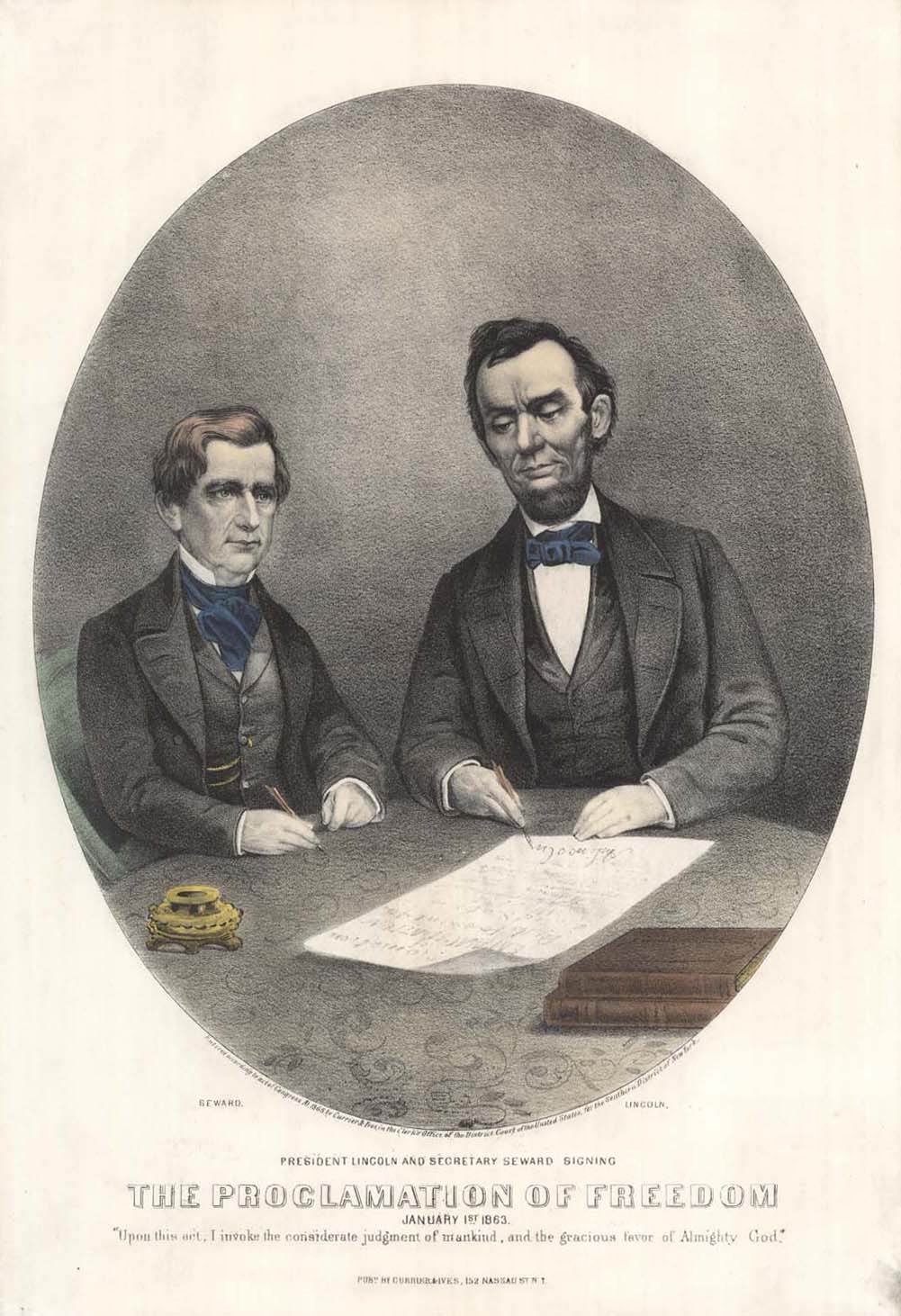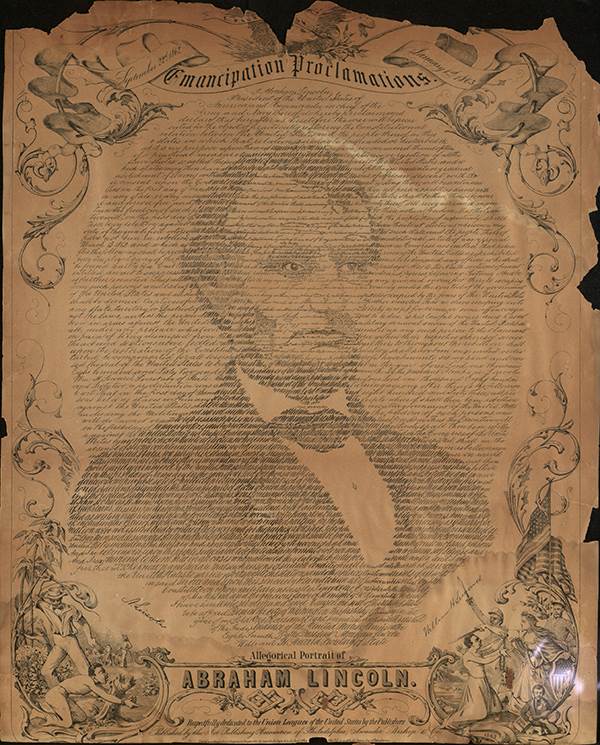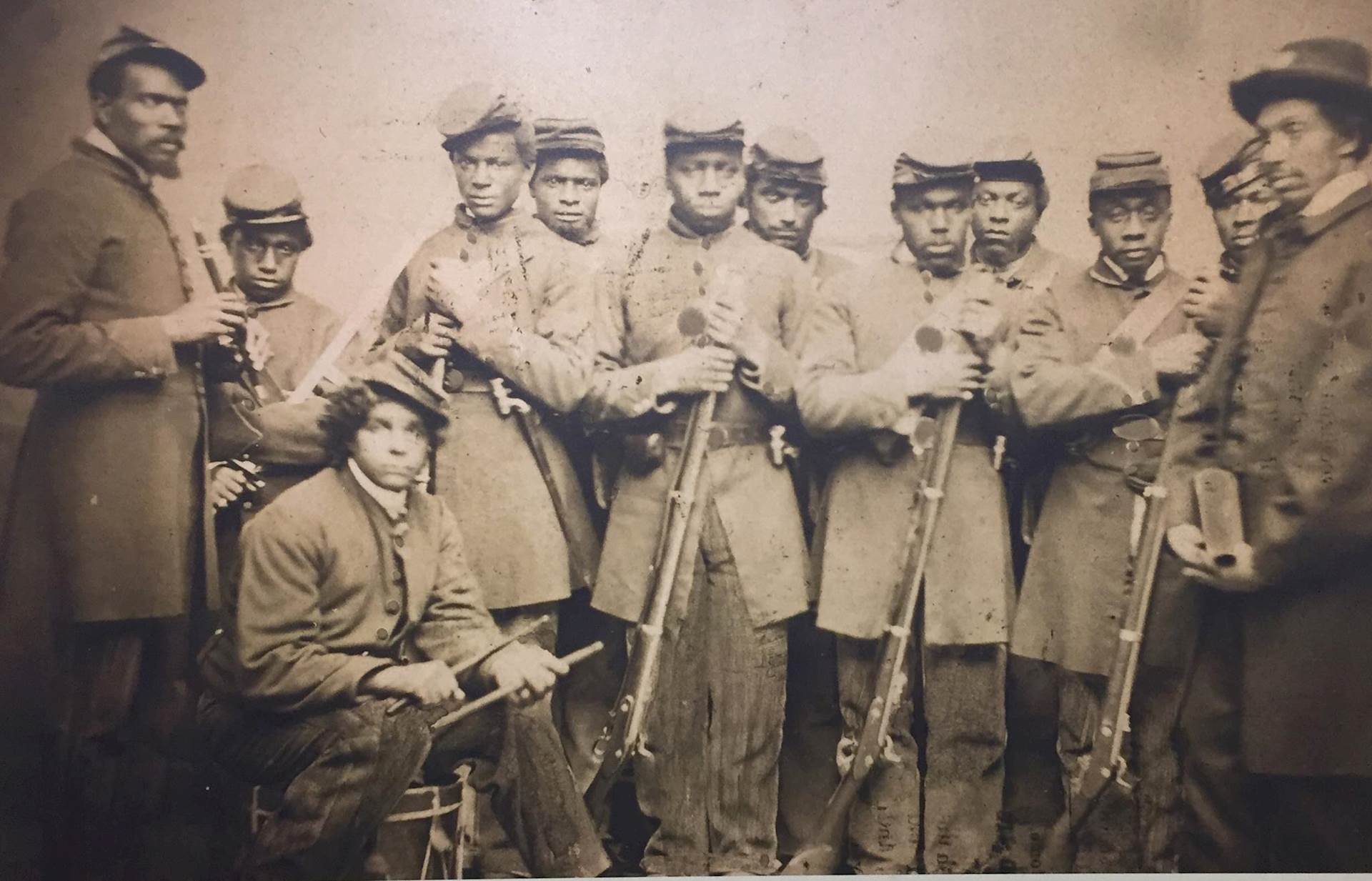The Emancipation Proclamation owned by the State of Illinois and housed at the Abraham Lincoln Presidential Library and Museum was created specifically to raise money for sick or wounded Civil War soldiers.
President Lincoln, along with Secretary of State William Seward, signed copies of the proclamation so they could be sold to raise money at the Great Central Sanitary Fair, held in Philadelphia in 1864. Lincoln’s aide John Nicolay also signed them.
 An illustration of Lincoln and Secretary of State William Seward signing the proclamation.
An illustration of Lincoln and Secretary of State William Seward signing the proclamation.
The signed copies sold for $10 each. Of the original 48, only 27 are known to still exist.
These versions are known as the Leland-Boker editions of the proclamation, named after magazine editor Charles Leland and poet/playwright George Boker, who arranged for them to be printed.
The ALPLM’s copy was donated to the State of Illinois in 1937 by Jesse Jay Ricks, a noted document collector from Chicago.
 A decorative edition of the Emancipation Proclamation
A decorative edition of the Emancipation Proclamation
Lincoln’s handwritten original version of the Emancipation Proclamation was destroyed in the Chicago Fire of 1871.
Lincoln announced his plans to issue an emancipation proclamation on Sept. 22, 1862. He formally issued the proclamation on Jan. 1, 1863. It was a legal and military document, not a speech, and contains little of the inspirational language for which Lincoln is known. Perhaps the best-known phrase is the promise that enslaved people in the rebellious states “shall be then, thenceforward, and forever free.”
The Emancipation Proclamation did not apply to all enslaved people. It did nothing for the ones in slave states such as Kentucky and Maryland that had not joined the Confederacy, and it could not be enforced in territory still under Confederate control.
But it opened the door for Black men to serve in the Union army. And it meant that every time the army captured new territory, more people would gain their freedom. Moreover, it officially expanded the Civil War’s purpose from saving the Union to also eliminating slavery.
 Black troops during the Civil War.
Black troops during the Civil War.
The Juneteenth holiday celebrates the anniversary of federal troops occupying Galveston, Texas, on June 19, 1865, and freeing the enslaved people there (and throughout Texas) as required by the Emancipation Proclamation.
Slavery was not formally abolished nationwide until the ratification of the 13th Amendment on Dec. 6, 1865. The ALPLM also has a copy of the 13th Amendment signed by Lincoln and many of the legislators who voted for it when Congress approved the amendment on Jan. 31, 1865.
 The ALPLM's copy of the 13th Amendment
The ALPLM's copy of the 13th Amendment